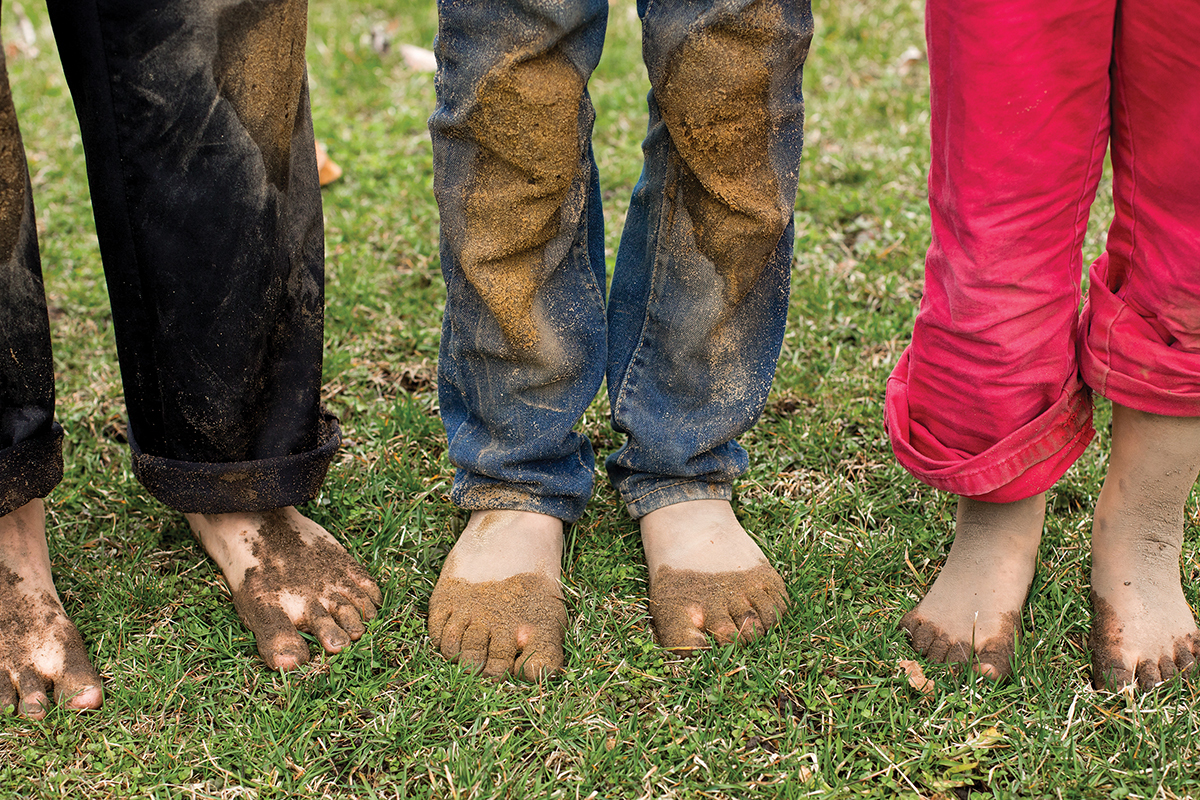Say Goodbye To Summer Stains

Summer is a season for swimming pools, running through sprinklers, water balloon fights, tree climbing, gardening, grilling out, and al fresco dining. Sadly, that also makes it prime season for hard-to-treat clothing stains — such as ground-in dirt; grass; popsicles; ice cream; brightly-colored drinks; ketchup, mustard, and other condiments; and blood from the occasional scrape or cut.
So to help you enjoy some big summer fun without any stress, keep this simple summer-stain removal guide on hand. Here’s to a season of stain-free clothes, no matter how messy your adventures get!
First, a few universal rules for treating stains:
– Test the solution somewhere inconspicuous, such as inside and near a seam, to ensure it will not damage or discolor the fabric.
– Do the least possible needed to remove a stain. In fact, repeat gentler steps several times before moving to harsher methods could discolor or damage fabrics.
– Air dry between treatments, as some stains reappear only after a fabric dries completely.
– Never mix stain-fighting solutions, especially chlorine bleach with ammonia, as this can generate poisonous fumes.
– Do not heat/tumble dry a garment until you are sure a stain is gone completely, as this could “set” the stain forever. In rare cases, it can also cause oil-based stains to ignite.
– When in doubt (or unsuccessful at removing a stain), check with a cleaning professional.
Stain chemistry will dictate which basic removal solution to use, but the same four-step treatment method generally applies.
1. Promptly blot away as much of the stain as you can using paper towels or a clean white cloth. For dried stains, use a plastic tool or the back of a butter knife to scrape away as much as possible, starting at the edges and working inward; then, re-wet the stain with cold water.
2. Spritz, sponge, or dab your chosen solution onto the stain and blot away gently with a paper towel or clean white cloth. Continue this step, rotating your cloth, until no more of the stain is transferring.
3. Allow the stained area to dry completely, then repeat steps 1 and 2 several times before moving on to harsher or store-bought stain-removal solutions, which carry higher risks of damaging fabrics (including causing summer whites to yellow irrevocably).
4. Once you are satisfied that the stain has been completely removed, either launder the garment as you normally would, or be sure to rinse away solution residues thoroughly and blot or allow to air dry.
Following are suggested cleaning solutions, depending on the summer-stain type.
– Salad dressing/mayonnaise: Speed is of the essence with oil-based stains, as allowing them to dry can cause permanent setting (also creating a small, but noteworthy future ignition risk when heat drying). It’s also important to pretreat oil-based stains with chemical agents, such as regular laundry detergent or grease-fighting dishwashing liquid, which are both designed to bind with and lift away oily molecules. Allow your stain remover of choice to work chemically for at least 15-20 minutes before blotting and rinsing with the hottest possible water that is safe for the fabric you are treating. Be especially patient with repeating steps 1 and 2 before laundering and heat drying.
– Mud/ground-in dirt: If it’s fresh mud you are dealing with – hopefully from puddle stomping or dancing in the rain – it is best to allow the stain to dry, then scrape or brush away as much dirt as possible before pretreating. Rubbing or blotting can cause a mud/dirt stain to spread and become even more entrenched in fabric fibers. That said, dirt is a combination stain with oily elements, so you need a chemical solution – regular laundry or dishwashing detergent – to bond with and lift away particles.
– Grass: Using a 1:1 solution of white vinegar and cold water, soak the stain for 15 to 30 minutes, then scrub gently with a small, nylon-bristled brush (such as a toothbrush).
– Sunscreen: Most sunscreens contain the ingredient avobenzone, which, when combined with water, causes rusty fabric stains. Avoid using any forms of bleach (chlorine or oxygen-based), opting instead for a solution specifically formulated to remove chemical rust.
– Antiperspirant/deodorant: Commercial anti-perspirants and deodorants have potential to cause two kinds of stains – first, those unsightly white stains from careless applications, and second (and more difficult to treat), yellowing stains, especially in white fabrics, which are caused by the aluminum in these products. For the former, think weak acid-based solutions like lemon juice or hydrogen peroxide; white vinegar works too, but can also cause yellowing in white fabrics. For the latter, start with a baking soda paste before moving to a commercial whitening solution.

